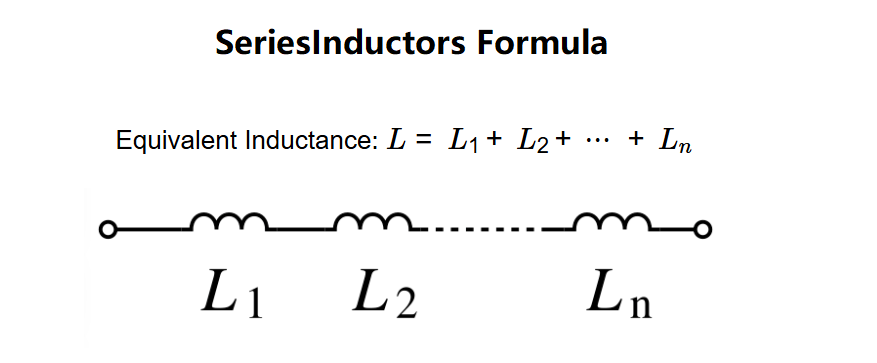 Home
Home
 Back
Back

Definition: This calculator computes the equivalent inductance (\( L \)) of multiple inductors connected in series.
Purpose: It is used in electrical engineering to determine the total inductance of a series combination of inductors, which is essential for designing circuits such as filters, oscillators, and power supplies.
The calculator uses the following formula:
Where:
Steps:
Calculating the equivalent inductance of inductors in series is crucial for:
Example 1: Calculate the equivalent inductance of three inductors in series with \( L_1 = 5 \, \text{H} \), \( L_2 = 10 \, \text{H} \), and \( L_3 = 15 \, \text{H} \):
Example 2 (Demonstrating Scientific Notation): Calculate the equivalent inductance of two inductors in series with \( L_1 = 1 \, \text{µH} \) and \( L_2 = 2 \, \text{µH} \):
Q: What is the equivalent inductance of inductors in series?
A: The equivalent inductance of inductors in series is the sum of the individual inductances: \( L = L_1 + L_2 + \cdots + L_n \). This means the total inductance increases as more inductors are added in series.
Q: Why does the equivalent inductance increase in a series connection?
A: In a series connection, the same current flows through each inductor, and the total magnetic flux linkage is the sum of the flux linkages of each inductor. This results in a higher total inductance.
Q: Can I use this calculator for inductors with different units?
A: Yes, the calculator allows you to specify the unit (H, mH, µH) for each inductor. It converts all values to henries (H) for calculation and then converts the result to the selected output unit.